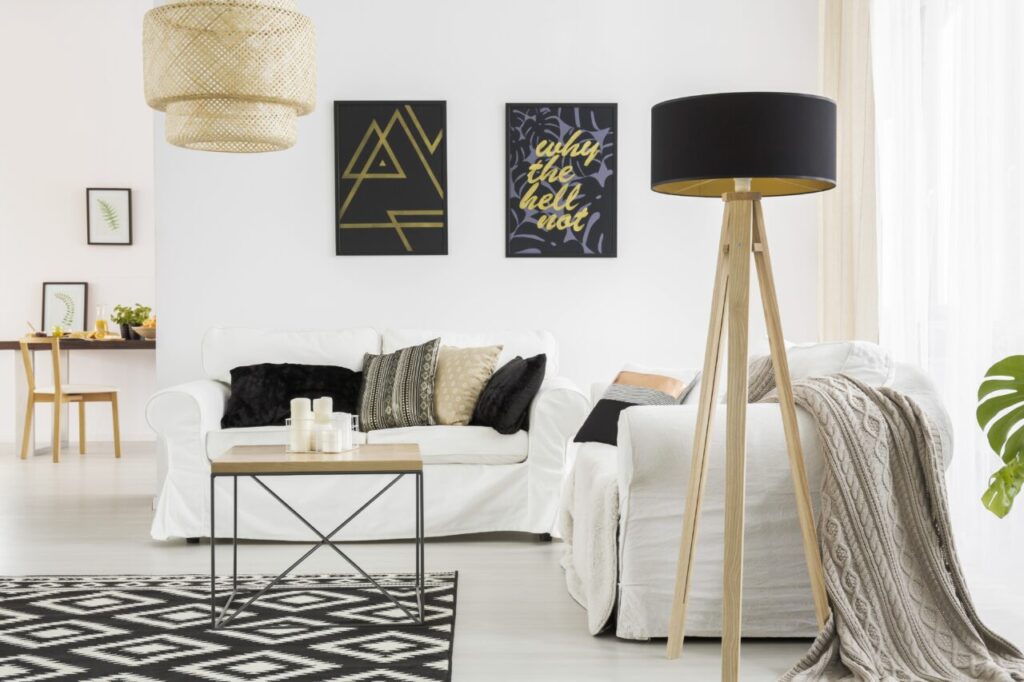For many people, days are spent rushing from one place to another, checking items off an endless to-do list, and taking care of everything from the job to the kids. When the day is over, your home should be a place to unwind and relax. If your home is another source of chaos and stress, here are 12 ways to create a relaxing atmosphere.
1. Declutter
It’s hard to relax with piles of stuff littering the rooms of your home. Marie Kondo urged followers to keep only things that sparked joy. That’s not always possible if your family includes children, but decluttering is the first step to creating a relaxing atmosphere. A clutter-free environment reduces visual chaos and promotes a sense of calm. Start one room at a time, focusing first on a private space such as your bedroom. Donate or store items you don’t regularly use.
2. Use natural colors
Natural colors evoke thoughts of nature, which has been proven to reduce stress and calm mental anxiety. A color palette consisting of soft blues, greens, muted grays, and earth tones has a soothing effect and can promote relaxation. If you are a person who loves bold colors, keep those as an accent or use them in more energetic areas of your home, such as the kitchen.
3. Add cozy textures
Adding soft textures through cushions, blankets, rugs, and curtains makes even a rental home or apartment feel more comfortable. Soft spaces are also more appealing when the weather gets cold, making your space warm and inviting.
4. Lean toward minimalistic design
Adhering to minimalistic design principles means looking for furniture and accessories with clean lines. Simple seating arrangements that are easy to move around are also important. Avoid sharp angles and overcrowding rooms with excessive furniture and decorations.
5. Incorporate nature-inspired decor
Once your color palette is in place, go a step further by bringing the outdoors in. Houseplants improve the air quality in your home, and other nature-inspired decor — such as driftwood, feathers, and dried flowers — connect you with nature’s seasonal fluctuations.
6. Turn the lights down low
Real estate agents like to turn the lights up to highlight a bright, clean space, but when it comes to destressing your home, turn the lights down low. Bright, harsh light can be jarring to the eyes and create tension. Soft, warm lighting from table lamps, floor lamps, and candles can provide a reset when your nervous system needs soothing.
7. Aromatherapy
The research on aromatherapy is mixed, but those who enjoy calming scents via candles or essential oil diffusers report more feelings of ease and relaxation. Scents such as lavender, chamomile, and eucalyptus can bring a sense of calm — as can the ritual of lighting a candle or adding oil to the diffuser.
8. Highlight personal artwork
Even if you have relocated from out of state and are living in temporary housing, it’s possible to create a more relaxing atmosphere by displaying artwork or photography that is personal to you. This can immediately reduce stress by giving you a sense of home, even if your current living space isn’t permanent.
9. Skip the rigid furniture
The days of plastic-wrapped sofas are gone, as well as rigid furniture that’s painful to sit on for any extended period of time. Invest in comfortable furniture for every room of the house. Not only does this support relaxation, but it also provides a sanctuary for unwinding.
10. Designate quiet spaces
Finding serenity in a household filled with children and pets can be challenging. That’s why it’s essential to designate a space where you can practice meditation or simply escape from the daily hustle of life. Finding a place of peace in the chaos can help you bring that calm to the rest of your home.
11. Play soft music
Acknowledge all of your senses by playing soft music in your home. This could be a white noise machine that drowns out exterior sound, which is especially important if you live near a busy road or a building undergoing construction. If you’d like to bring the sounds of nature indoors, a water fountain or playlist of nature recordings creates a tranquil atmosphere. Your favorite soft music is another way to nurture a relaxing space.
12. Reduce the use of technology
The ever-present hum of electronic devices makes every situation more urgent. You can immediately create a stress-free, relaxed feeling in your home by reducing the use of technology. This might mean relocating the TV from your bedroom, setting aside specific times for screens, and being more mindful about how often you check your email and social media.


